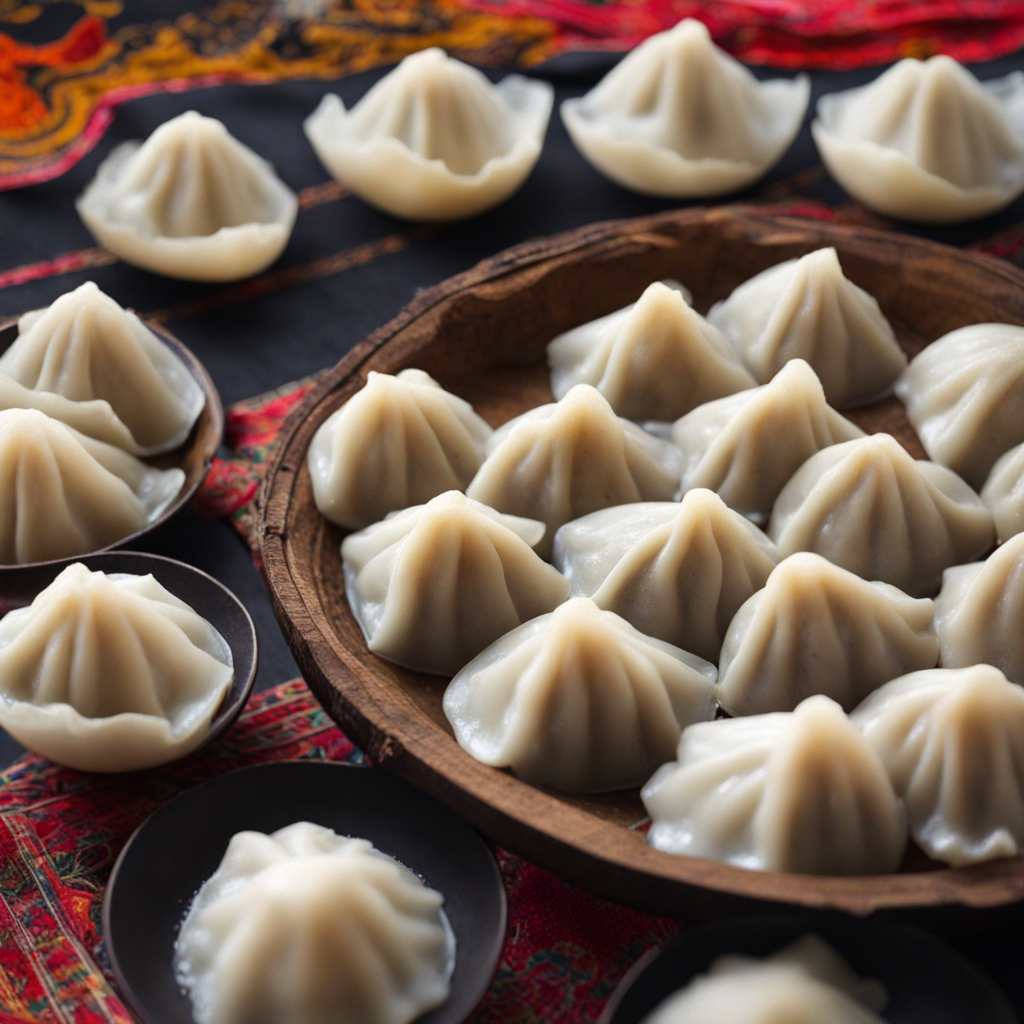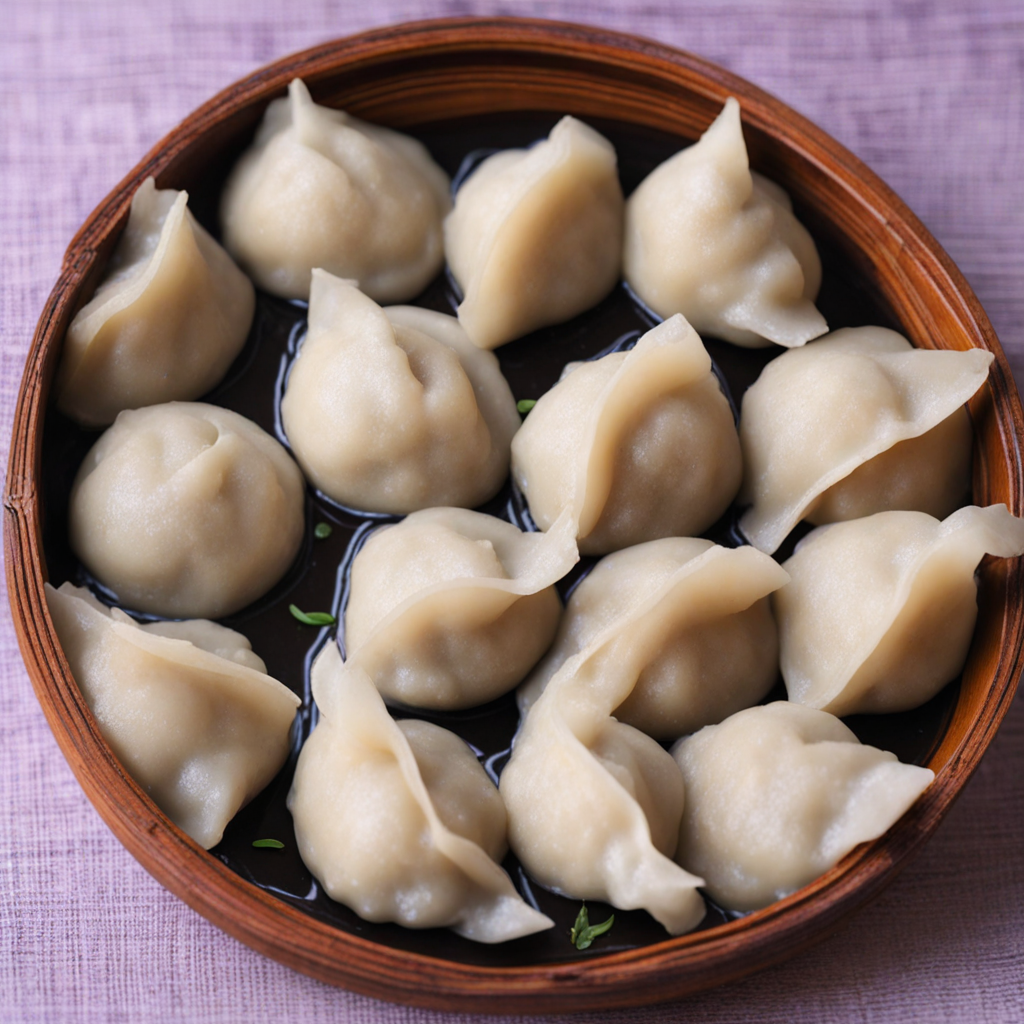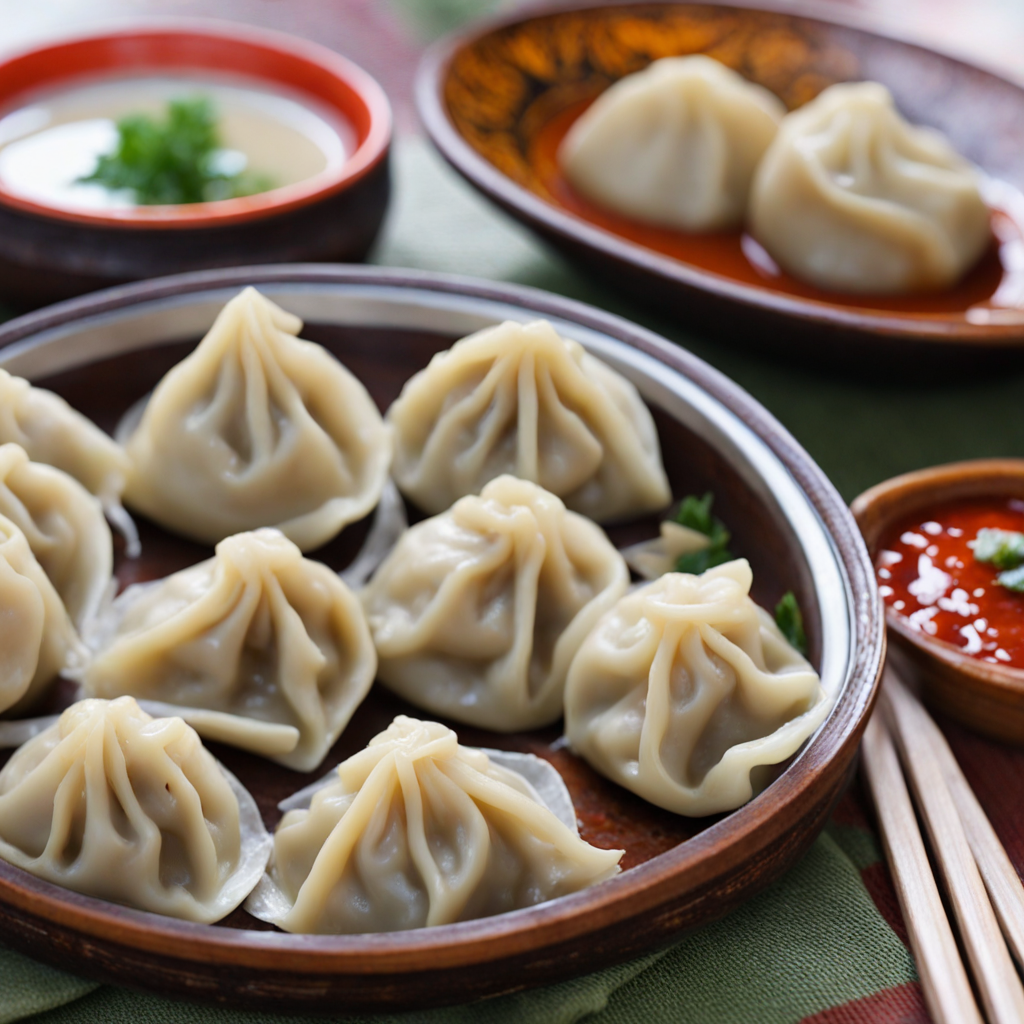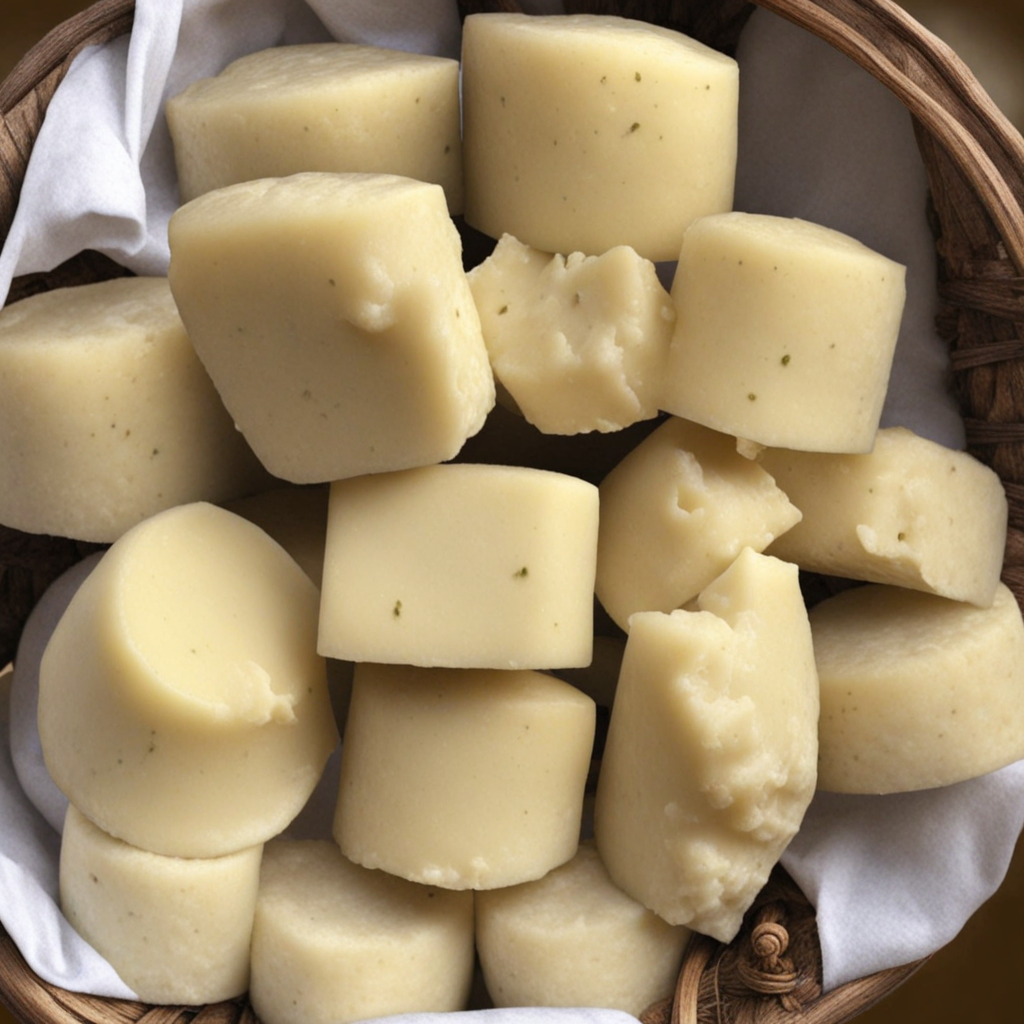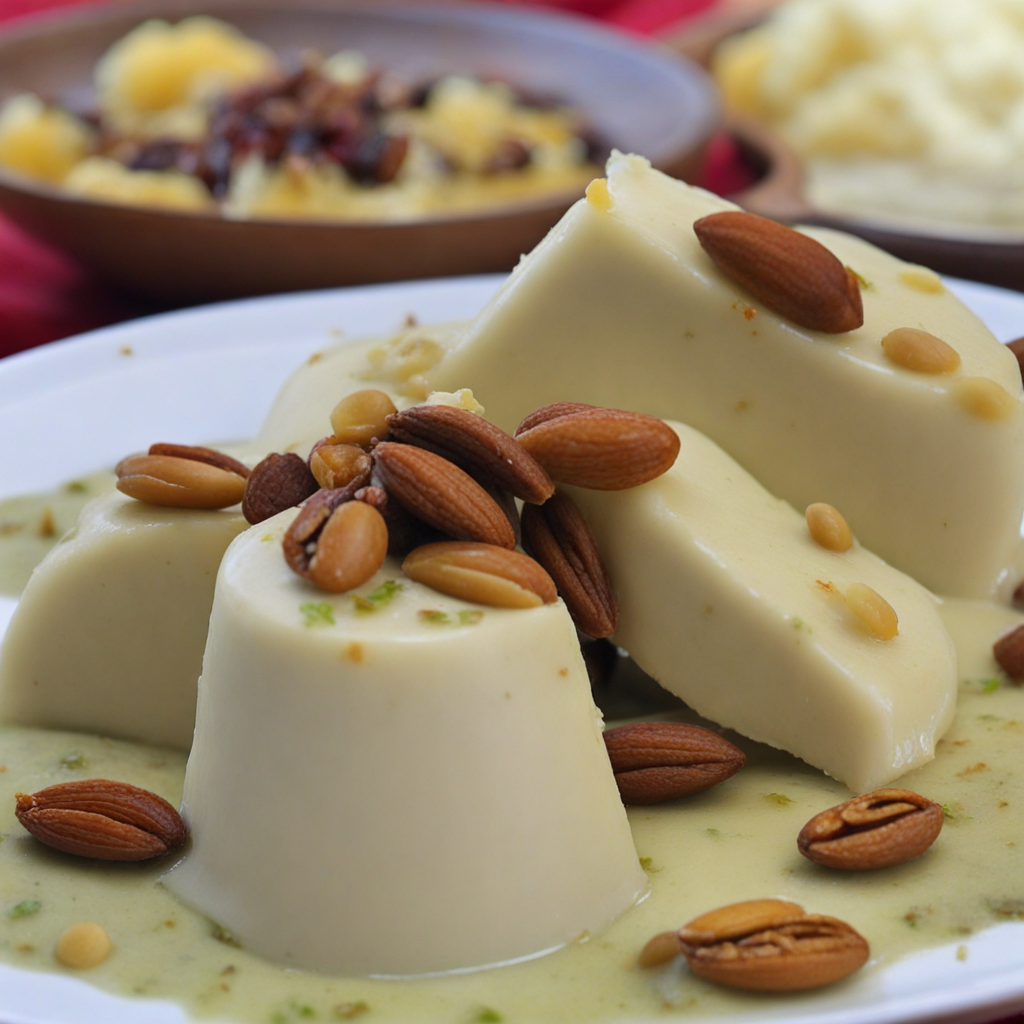Yomari
Yomari is a traditional delicacy from Nepal, particularly popular in the Newar community of the Kathmandu Valley. This unique treat is shaped like a small dumpling, made from rice flour that is steamed to achieve a soft and chewy texture. The dough is often kneaded to perfection, resulting in a delicate exterior that envelops a delicious filling. The name 'Yomari' itself translates to 'delightful' in the Newari language, and it truly lives up to its name with its inviting appearance and taste. What makes Yomari stand out is its delectable filling, which typically consists of a mixture of grated coconut and jaggery, a traditional unrefined sugar made from palm sap. This sweet combination creates a rich, aromatic flavor that is both comforting and indulgent. Some variations include fillings made from sesame seeds or even chocolate, catering to diverse palates and preferences. The sweetness of the filling perfectly balances the subtle nuttiness of the rice flour, creating an unforgettable flavor profile that invites you to savor each bite. Yomari is more than just a treat; it is often prepared during special occasions and festivals, symbolizing joy and celebration in Nepali culture. The process of making Yomari is often a communal activity, bringing families and friends together to share in the experience. Whether enjoyed as a snack, a dessert, or during festive gatherings, Yomari offers a delightful taste of Nepalese heritage, making it a must-try for anyone looking to explore new and exciting flavors.
How It Became This Dish
The History of योमरी (Yomari) from Nepal Yomari, a traditional delicacy from the Newar community of the Kathmandu Valley in Nepal, is a sweet dumpling that embodies the rich cultural tapestry and culinary heritage of the region. With its unique shape, delightful fillings, and significant cultural importance, Yomari is not just a treat but a symbol of celebration, community, and identity. #### Origins and Cultural Roots The origins of Yomari can be traced back to the Newar community, one of the indigenous ethnic groups in Nepal with a history that dates back over a thousand years. The Newars are renowned for their rich culture, which includes diverse festivals, rituals, and an extensive culinary repertoire. Yomari is traditionally associated with the festival of Yomari Punhi, which marks the end of the rice harvest season and is celebrated on the full moon day in the month of Mangsir (November-December). The word 'Yomari' is derived from the Newari language, where 'yo' means 'to steam' and 'mari' refers to 'a delicacy.' The dumpling itself is made with a rice flour dough that is shaped into a half-moon and filled with a mixture of jaggery, coconut, and sometimes sesame seeds or khuwa (a type of milk fudge). This combination of ingredients reflects the agricultural practices of the Newar community, highlighting their reliance on locally sourced materials and seasonal produce. #### Cultural Significance Yomari holds a profound cultural significance in Newar society. It is often prepared and shared during the Yomari Punhi festival, where families come together to make this delicacy in a communal setting. The act of making Yomari is not just about cooking; it is a ritual that reinforces family bonds and serves as a means of passing down culinary traditions from one generation to the next. The sweet dumpling is also imbued with symbolic meaning. In Newar culture, Yomari represents prosperity and abundance, mirroring the bountiful harvests. The filling, made primarily of jaggery and coconut, symbolizes sweetness and happiness, making it a fitting offering during celebrations. In many households, Yomari is offered to deities as a way to express gratitude for the harvest and to seek blessings for future prosperity. #### Development Over Time Throughout history, Yomari has evolved while maintaining its core identity. Its preparation methods have seen some changes, particularly with the advent of modern cooking techniques and ingredients. Traditionally, Yomari was made during the harvest season and was a labor-intensive process. Families would gather to prepare large batches, and the activity itself was a festive occasion, filled with laughter and camaraderie. As Nepal experienced political, social, and economic changes, so too did the culinary practices surrounding Yomari. The increasing availability of commercial products and the influence of globalization brought about variations in the traditional recipe. Contemporary interpretations now include different fillings, such as chocolate, fruits, and other sweeteners, catering to a broader audience and adapting to modern tastes. This has allowed Yomari to transcend its regional boundaries, appealing to both locals and tourists alike. Despite these changes, the essence of Yomari as a traditional food remains intact. It continues to be a staple during festivals, family gatherings, and special occasions. In recent years, there has been a resurgence of interest in traditional foods, prompting communities to revisit and celebrate their culinary heritage. This has reinvigorated the practice of making Yomari, with many younger generations taking pride in mastering the art of its preparation. #### Yomari in Contemporary Nepal In contemporary Nepal, Yomari has gained recognition beyond the Newar community. Food enthusiasts and chefs are exploring traditional dishes, leading to the emergence of Yomari in contemporary restaurants and food festivals. This has contributed to the growing appreciation for Nepali cuisine on a global scale. The rise of social media has also played a critical role in popularizing Yomari. Food bloggers and influencers share recipes, cooking tutorials, and personal stories associated with Yomari, fostering a sense of community and encouraging people to engage with their culinary heritage. This digital platform allows for a broader dialogue about traditional foods and their significance, bridging the gap between generations and cultures. #### Conclusion Yomari is more than just a sweet dumpling; it is a representation of the Newar culture and a testament to the resilience and adaptability of culinary traditions. Its journey from a harbinger of harvest blessings to a celebrated delicacy enjoyed by a diverse audience showcases the dynamic interplay between tradition and modernity. As Nepal continues to navigate the complexities of globalization while honoring its rich cultural heritage, Yomari stands as a beacon of identity, a culinary treasure that invites both nostalgia and innovation. Whether enjoyed during the festive season or as a cherished treat throughout the year, Yomari remains a delicious reminder of the importance of community, celebration, and the timeless art of cooking.
You may like
Discover local flavors from Nepal


